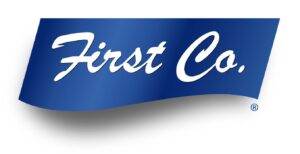Introduction
Managing HVAC systems in multi-occupant buildings involves several challenges and responsibilities. These systems are crucial in maintaining comfort and ensuring efficient energy use. However, common mistakes can lead to inefficiencies and increased costs. Understanding these pitfalls helps property managers maintain HVAC performance and tenant satisfaction.
Neglecting Regular Maintenance
Regular maintenance is vital for keeping HVAC systems in optimal working condition, especially in multi-occupant buildings. Proper upkeep helps prevent unexpected breakdowns, extends system lifespan, and ensures efficient operation throughout the year. Neglecting maintenance can lead to costly repairs and decreased system performance.
Routine tasks like changing filters and cleaning coils might seem minor but have a significant impact. Clogged filters restrict airflow, making the system work harder, increasing energy use and increasing bills. Dirty coils reduce the ability to absorb heat, causing the system to run longer than necessary. Both issues contribute to unnecessary wear and tear, resulting in potential failures.
It’s important to schedule regular inspections and cleaning for parts that collect dirt and debris. Lubricating moving parts, checking refrigerant levels, and ensuring proper thermostat calibration are tasks that should not be overlooked. Regular maintenance enhances system efficiency and improves indoor air quality, benefiting occupants and building managers.
Establishing a consistent maintenance routine prevents small issues from escalating into bigger problems, ultimately saving time and expenses. A well-maintained HVAC system provides reliable comfort and satisfaction for all building occupants.
Poor System Sizing and Installation
Proper sizing and installing HVAC systems are critical for efficient performance in large buildings. Incorrect sizing leads to inadequate heating or cooling, uncomfortable indoor environments, and increased energy costs. Addressing these issues from the start helps avoid future complications and expenses.
Oversized systems cycle on and off frequently, causing excess wear on components and wasting energy. Conversely, undersized systems struggle to maintain desired temperatures, increasing energy usage over time. Factors like building size, occupancy, and climate conditions must be considered during planning to ensure the right system size.
In addition to sizing, incorrect installation presents its own set of problems. Improperly installed ductwork can lead to airflow issues, inefficient heat distribution, and increased energy losses. Poorly sealed ducts allow conditioned air to escape, reducing system effectiveness and comfort levels for tenants.
Guidelines for ensuring correct sizing and installation include consulting with experienced professionals and thoroughly analyzing your building’s unique needs. Proper installation requires precise measurements and placement of components, along with testing for optimal airflow and temperature uniformity throughout the space.
By addressing sizing and installation concerns upfront, you ensure that HVAC systems operate at peak performance, providing steady comfort and reducing energy costs for multi-occupant environments.
Ignoring Energy Efficiency Upgrades
Upgrading to energy-efficient HVAC systems brings several benefits that can transform the function of multi-occupant buildings. Enhanced energy efficiency reduces utility bills and improves system performance, resulting in a more sustainable operation.
One significant benefit of energy-efficient upgrades is cost savings. Systems that use less energy to maintain comfortable temperatures lead to lower monthly expenses. This efficiency also contributes to fewer system malfunctions and longer equipment lifespan, minimizing costly repairs and replacements.
Common upgrades that boost energy efficiency include smart thermostats, which allow for refined control over heating and cooling. These devices adjust temperatures based on occupancy patterns and provide data to optimize energy use. Energy-efficient components, such as high-performance motors and compressors, can further reduce energy waste and improve reliability.
Determining when to upgrade depends on several factors, including age and recurring performance issues. If a system regularly requires repairs or struggles to meet demands, it might be time for an upgrade. Look for clear signs of inefficiency, such as uneven temperatures or frequent cycling systems.
Choosing energy-efficient options involves exploring the latest technologies and consulting with HVAC experts who understand the specific needs of large buildings. Investing in upgrades ensures your HVAC system operates at peak efficiency, providing comfort without excessive energy use.
Overlooking Tenant Comfort and Control
Ensuring tenant comfort is vital to effective HVAC management in multi-occupant buildings. A consistent temperature control system and high air quality can greatly enhance tenant satisfaction and retention.
Tenant comfort hinges on maintaining a comfortable temperature while delivering fresh air. Air quality affects health and productivity, making proper filtration and ventilation crucial elements of the HVAC system. Regularly maintaining and upgrading air filters can help keep air pollutants at bay.
Flexible systems that cater to various tenant preferences are essential. Zoned systems enable different building areas to be heated or cooled separately, allowing occupants to adjust settings to their liking. This flexibility helps accommodate diverse comfort needs within a large property.
To improve tenant satisfaction, consider implementing systems capable of advanced filtration and air quality monitoring. These systems help address specific health concerns or preferences, leading to happier occupants. Offering easy-to-control thermostats and mobile apps also gives tenants more direct control over their environment.
Addressing these aspects increases tenant comfort and creates a more welcoming, adaptable space. Prioritizing tenant needs in HVAC management enhances the overall experience in multi-occupant settings.
Creating Sustainable Comfort with First Co.
The overall efficiency and comfort in multi-occupant buildings rely heavily on the condition and management of the HVAC system. Regular maintenance, correct sizing and installation, energy efficiency upgrades, and tenant-focused solutions are key elements that demand attention for optimal performance.
Each aspect significantly improves system effectiveness, reduces energy costs, and enhances tenant experience. Whether upgrading outdated systems or simply maintaining existing ones, focusing on these areas can lead to a more sustainable and enjoyable building environment.
Upgrade your HVAC system and enrich your environment with First Co.’s advanced solutions. Our expertise in crafting energy-efficient HVAC products for multi-occupant buildings ensures you maximize comfort while minimizing costs. Connect with us today to discover how we can help elevate your property’s HVAC performance.

